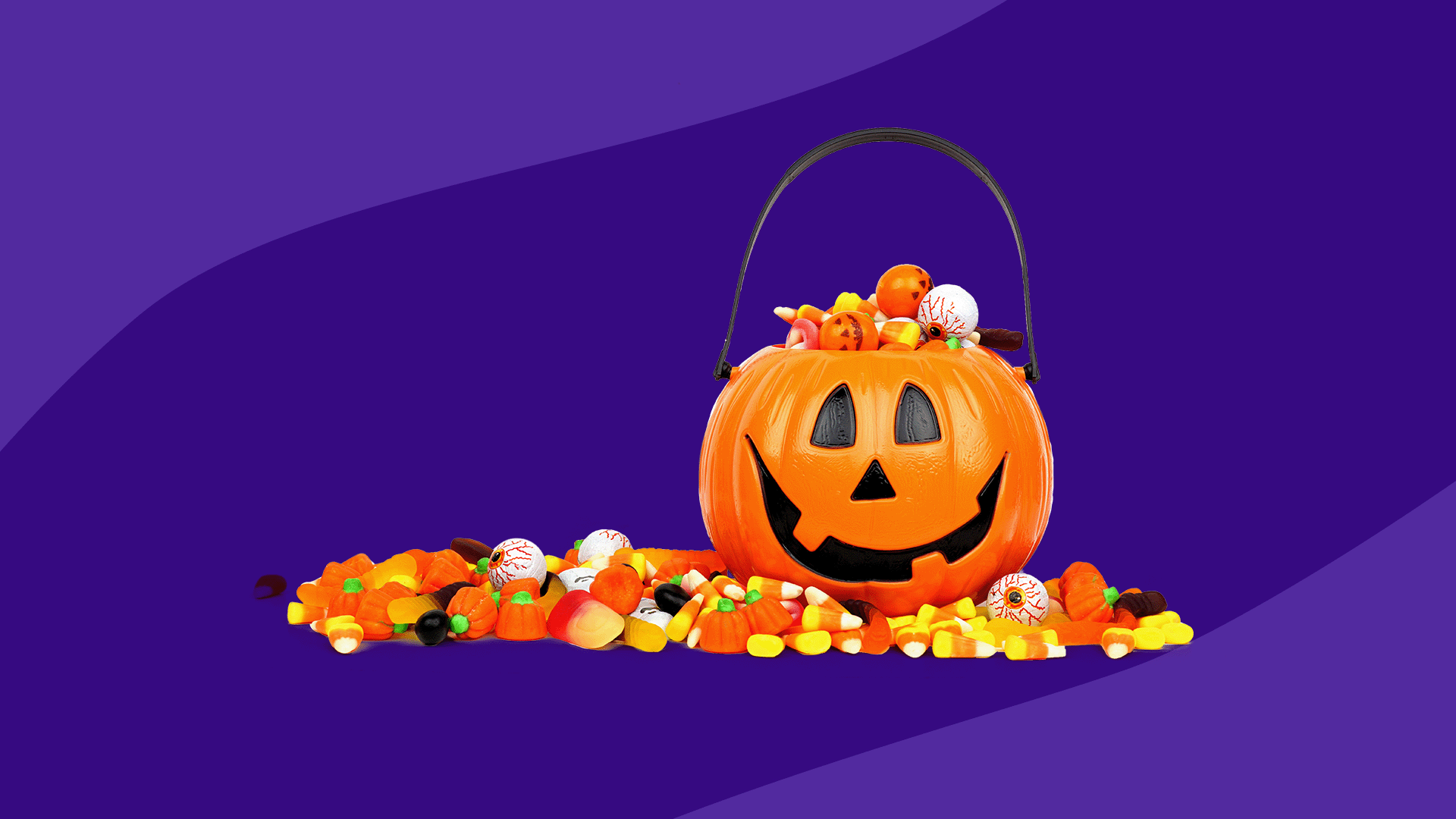Who needs gluten-free candy? | How to read candy labels | Gluten-free Halloween candy options | How to prepare for trick-or-treating
When the weather turns cooler, and mums and pumpkins start popping up everywhere, that means Halloween is right around the corner. And while it’s a holiday that both kids and adults love, it can be challenging for families who have to consider food-based allergies, intolerances, or sensitivities to things like gluten.
It’s true: Many favorite candies contain gluten—Milky Way bars, Kit Kats, Lindt chocolate, and even Twizzlers—but there are also plenty that don’t. With a little bit of planning and practice, Halloween doesn’t have to be a scary time for gluten-free households.
Who needs gluten-free candy?
Celiac disease is a condition that triggers an immune response to the gluten found in wheat, barley, and rye. People who have this disease must avoid gluten because it might make them feel sick—common symptoms include bloating, diarrhea, headaches, joint pain, nausea, and vomiting. And, over time, it can cause damage to the small intestine, explains Jocelyn Silvester, MD, director of research for the celiac disease program at Boston Children’s Hospital and an assistant professor of pediatrics at Harvard Medical School.
Not everyone who avoids eating gluten has celiac disease. Some people are allergic to wheat and there are others who are sensitive to gluten. Meaning, eating gluten can have unpleasant side effects like headaches or nausea, but it doesn’t cause lasting damage. The tricky part about these conditions? Gluten can lurk in foods where you don’t expect it, including hard candy, truffles, licorice, fun-size candy bars and chewy confections—and goes by many names.
Why it’s important to read labels
Dr. Silvester says the best way to know if a food contains gluten is to read the ingredients label (the same goes for looking for other common allergens such as soy, tree nuts, and dairy).
Gluten can show up in many different forms on candy labels, but here are some ingredients to look out for:
- Wheat
- Wheatberries
- Durum
- Semolina
- Farro
- Graham
- Rye
- Barley
- Triticale
- Malt
- Brewer’s yeast
Some bite-size or individually wrapped candies might not include the ingredient list on the packaging. In those cases, your best bet is to look up the candy on the manufacturer’s website to find the ingredients. You can also email or call the company for more information. Even if a product does not contain the ingredients listed above, it is important that they are labeled “gluten free” as some foods may still be processed in facilities with gluten and have cross-contamination. Some of the big candy companies include:
- Ferrero
- Hershey’s Company (they have an in-depth gluten-free candy list)
- Just Born
- Mars Wrigley
- Nestle
- Tootsie (all their candy products are gluten-free)
Gluten-free Halloween candy list
Although some popular Halloween candy is off-limits, there are plenty of favorites that are gluten-free. The tricky part is that just because the regular version of a particular candy doesn’t contain gluten, that’s not always the case for the bite-size or holiday versions and vice versa. Different variations can have different ingredients, or even be made on different lines in different factories, Dr. Silverster says.
“Some treat size or mini candies have a different gluten-free status than the full-size version, so always check for the specific size online if there isn’t a gluten-free label,” Dr. Silverster says. For example, a Nestle Butterfinger bar is gluten-free, but a Butterfinger Crisp isn’t.
Here’s a guide to gluten-free Halloween candy:
- 3 Musketeers bar
- Almond Joy (except Almond Joy pieces)
- Baby Ruth
- Bit-o-Honey
- Black Forest gummy bears
- Butterfinger (only original flavor)
- Brach’s Candy Corn
- Charleston Chew
- Dots
- Dove chocolate
- Dum Dums lollipops
- Fun Dip
- Goobers
- Heath bars
- Hershey’s Kisses
- Hershey’s Milk Chocolate Bar and Giant bar (but not special dark chocolate bar)
- Hershey’s Milk Duds
- Hershey’s Nuggets
- Hot Tamales
- Jelly Belly jelly beans
- Junior Mints
- Laffy Taffy
- Laffy Taffy rope
- Lemonheads
- Lifesaver Creme Savers
- M&Ms (except crispy, pretzel, and some seasonal items)
- Mike and Ike
- Mounds bars
- Necco Wafers
- PayDay bar
- Marshmallow Peeps (not all varieties)
- Raisinets
- Reese’s Peanut Butter Cups
- Reese’s Pieces candy (but not Reese’s pieces eggs)
- Reese’s Fast Break
- Rolo Caramels
- Skittles
- Skor toffee bar
- Smarties
- Snickers bar
- Sno-caps
- Sour Patch Kids
- Starburst
- Starburst unwrapped minis
- Sugar Daddy
- Swedish Fish
- SweeTarts
- Tootsie Rolls
- Tootsie Pops
- Welch’s fruit snacks
- Wonka Pixy Stix
- York Peppermint Patties (except York pieces, York shapes, and York minis)
Have a Halloween candy game plan
If your child has celiac disease or a gluten sensitivity, the best way to handle Halloween is to go in with a game plan. Teach your kids not to eat any candy until you’ve had a chance to inspect it, says Katarina Mollo, a registered dietitian, parent to a child with celiac disease and director of education for the National Celiac Association. She also encourages getting your kids involved in sorting the candy.
“I talk to my kids about candy that is gluten free and candy that isn’t to help them pick when they get offered a bowl of candy at the door when trick-or-treating,” Mollo says. “Later on, I go through the candy with the kids so they get practice reading labels.”
Mollo also uses the Switch Witch at her house. That’s a friendly witch who comes and takes away excess Halloween candy and leaves a gift behind in exchange. The Switch Witch isn’t just for kids with food allergies (or households that are sugar-free or dairy-free), but can be used by any parent who isn’t crazy about having a sack full of sugary treats in the house.











